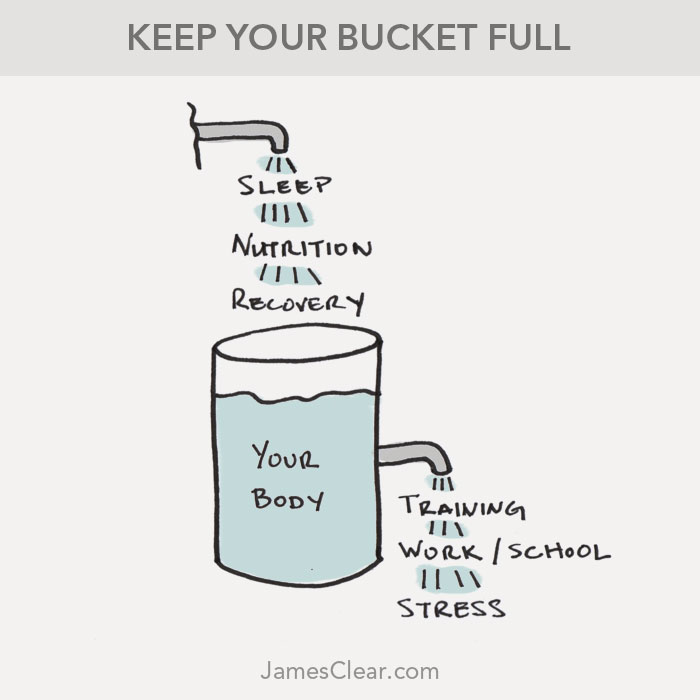It was my first year of graduate school and my professor was standing at the front of the room. He was telling our class about a mistake he made years before.
About a decade earlier, my professor had been one of the senior executives at Sears, Roebuck & Company, the large department store chain. They were in the middle of a massive national campaign and preparing for a major brand launch. My professor was leading the operation.
For almost two months prior to the launch day, he was flying all over the country to strike up buzz with major partners and media companies. While crisscrossing the country on flight after flight, he was also trying to run his department from the road. For weeks on end, he would meet with the media and business partners all day, answer emails and phone calls all night, squeeze in 3 or 4 hours of sleep, and wake up to do it all over again.
The week before the big launch day, his body gave out on him. He had to be rushed to the hospital. Major organs had started to fail from the chronic stress. He spent the next eight days lying in a hospital bed, unable to do anything as the launch day came and went.
Your Bucket of Health and Energy
Imagine that your health and energy are a bucket of water.
In your day-to-day life, there are things that fill your bucket up. These are inputs like sleep, nutrition, meditation, stretching, laughter, and other forms of recovery.
There are also forces that drain the water from your bucket. These are outputs like lifting weights or running, stress from work or school, relationship problems, or other forms of stress and anxiety. 1

The forces that drain your bucket aren't all negative, of course. To live a productive life, it can be important to have some of things flowing out of your bucket. Working hard in the gym, at school, or at the office allows you to produce something of value. But even positive outputs are still outputs and they drain your energy accordingly.
These outputs are cumulative. Even a little leak can result in significant water loss over time.
The Theory of Cumulative Stress
I usually lift heavy three days per week. For a long time, I thought I should be able to handle four days per week. However, every time I added the extra workout in, I would be just fine for a few weeks and then end up exhausted or slightly injured about a month into the program.
This was frustrating. Why could I handle it for four or five weeks, but not longer than that?
Eventually, I realized the issue: stress is cumulative. Three days per week was a pace I could sustain. When I added that fourth day in, the additional stress started to build and accumulate. At some point, the burden became too big and I would get exhausted or injured.
In extreme cases, like that of my professor, this snowball of stress can start to roll so fast that it pushes you to the brink of death. But it's important to realize that cumulative stress is something that you're dealing with even when it isn't a matter of life or death. The stress of extra workouts or additional mileage. The stress of building a business or finishing an important project. The stress of parenting your young children or dealing with a bad boss or caring for your aging parents. It all adds up.
Keeping Your Bucket Full
If you want to keep your bucket full, you have two options.
- Refill your bucket on a regular basis. That means catching up on sleep, making time for laughter and fun, eating enough to maintain solid energy levels, and otherwise making time for recovery.
- Let the stressors in your life accumulate and drain your bucket. Once you hit empty, your body will force you to rest through injury and illness. Just like it did with my professor.
Recovery is Not Negotiable
I'm in the middle of a very heavy squat program right now. (It's called the Smolov squat program. If you're interested, I put the spreadsheet up here.)
I've spent the last two years training with really easy weights and gradually working my way up to heavier loads. I've built a solid foundation of strength. But even with that foundation, the weights on this program are heavy and the intensity is high.
Because of this, I'm taking special care to allow myself additional recovery. I'm allowed to sleep longer than usual. If I need to eat more, so be it. Usually, I'm lazy about stretching and foam rolling, but I have been rolling my little heart out every day for the last few weeks. I'm doing whatever I can do to balance the stress and recovery deficit that this squat program is placing on me.
Why?
Because recovery is not negotiable. You can either make time to rest and rejuvenate now or make time to be sick and injured later. Keep your bucket full.2
My image of the bucket was inspired by the original idea of the stress and recovery bucket mentioned in Paul Chek's book, How to Eat, Move and Be Healthy!
Thanks to Mark Watts for originally sharing with me the idea that stress is cumulative.